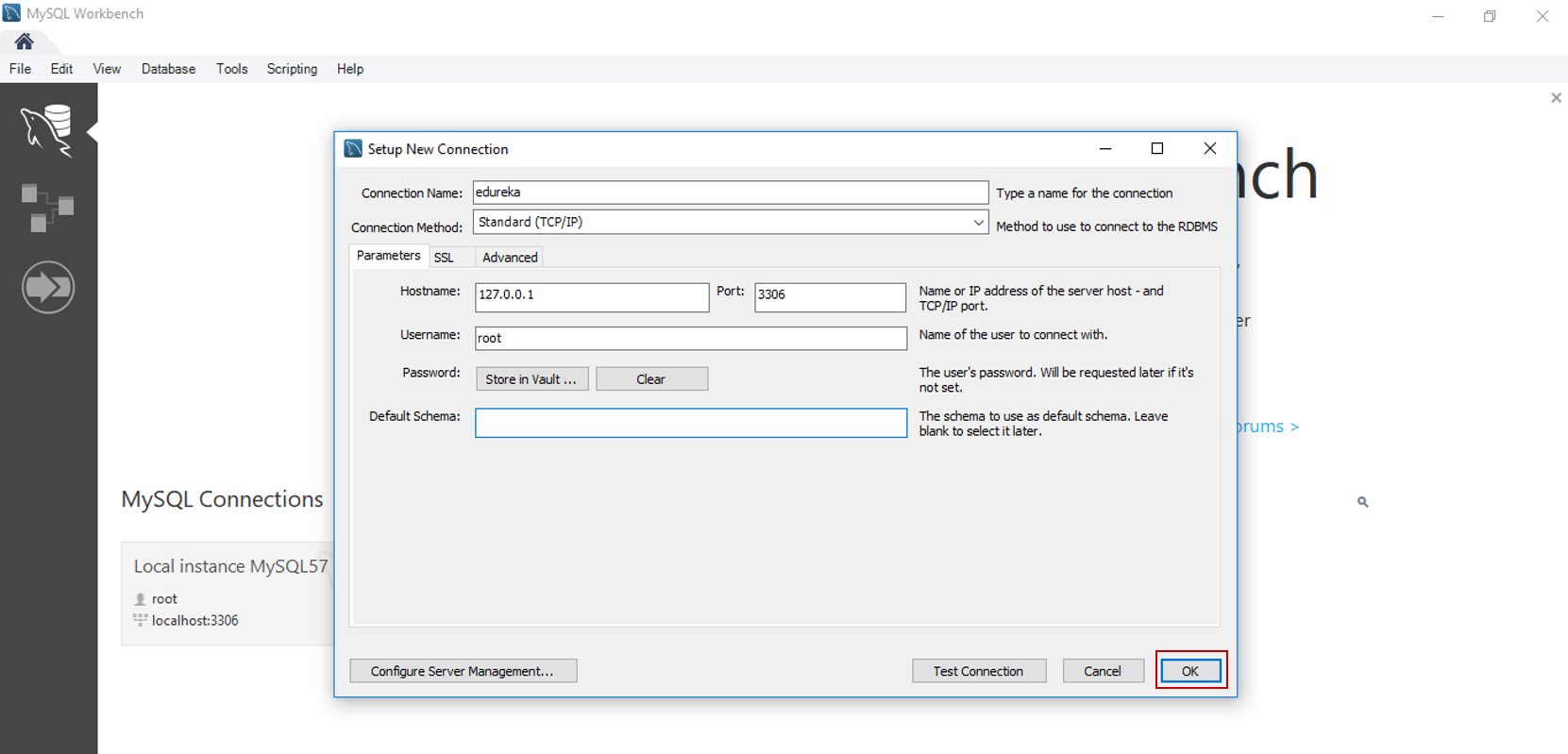
- MYSQL WORKBENCH EXPORT CONNECTIONS FULL
- MYSQL WORKBENCH EXPORT CONNECTIONS PASSWORD
- MYSQL WORKBENCH EXPORT CONNECTIONS WINDOWS
With the goal of being able to fully move between Azure and our own server infrastructure, so this is where MySQL Workbench (mysqldump) and a few other tools and scripts come into play.

MYSQL WORKBENCH EXPORT CONNECTIONS FULL
So there are many plugins that cover WordPress backup and restore but we won’t go into these in this article, we wanted a plugin free way and something where we felt we had full control and something we could automate. At the time of writing this article we host in Azure but at anytime we may want to change host or even host the site on our own server infrastructure in a data centre and also protect ourselves from bad actors by having routine and automated backups. So what a great early article to tell you how we go about backing up and restoring this site.
MYSQL WORKBENCH EXPORT CONNECTIONS PASSWORD
Use the same password you used when previously configuring the server to accept remote connections.So as we set out on this journey to create a great blog we realised we needed increase our WordPress IQ, from hosting to backups to plugins you name it. If the connection is successful, click “OK” to save the connection.ĭouble-click the new connection to launch the MySQL Workbench SQL Editor. Select “Standard (TCP/IP)” as the “Connection Type”.Įnter your server’s IP address in the “Hostname” field.Ĭlick “Test Connection” to test the connection. Follow these steps:Ĭlick the “+” symbol in the “MySQL Connections” tab to add a new connection.Įnter a name for the connection in the “Connection Name” field. Once your MySQL server is configured to accept remote connections, you can connect to it using MySQL Workbench. To connect to your remote MySQL database server using MySQL Workbench, you have to allow remote connections to the server. NOTE: This section assumes that you have downloaded and installed MySQL Workbench. If present, the installer uses MariaDB and if not, it uses MySQL.ĭepending on which database server (MySQL or MariaDB) is used by the installation, use the appropriate guides in our documentation for database-related operations.
MYSQL WORKBENCH EXPORT CONNECTIONS WINDOWS
Windows native installer users can identify which database server is used in the stack by checking for the presence of the installdir/mariadb directory.

Linux and macOS native installer users can identify which database server is used in the stack by running the command below: $ test -d installdir/mariadb & echo "MariaDB" || echo "MySQL" On account of these changes, the file paths and commands stated in this guide may change depending on whether your Bitnami stack uses MySQL or MariaDB. NOTE: We are in the process of modifying the configuration for many Bitnami stacks. Learn more about the Bitnami stack environment and about OS X VMs.

On OS X VMs, the installation directory is /opt/bitnami and OS X VM users can click the “Open Terminal” button to run commands.

Before running the commands shown on this page, you should load the Bitnami stack environment by executing the installdir/use_APPNAME script (Linux and MacOS) or by clicking the shortcut in the Start Menu under “Start -> Bitnami APPNAME Stack -> Application console” (Windows).


 0 kommentar(er)
0 kommentar(er)
